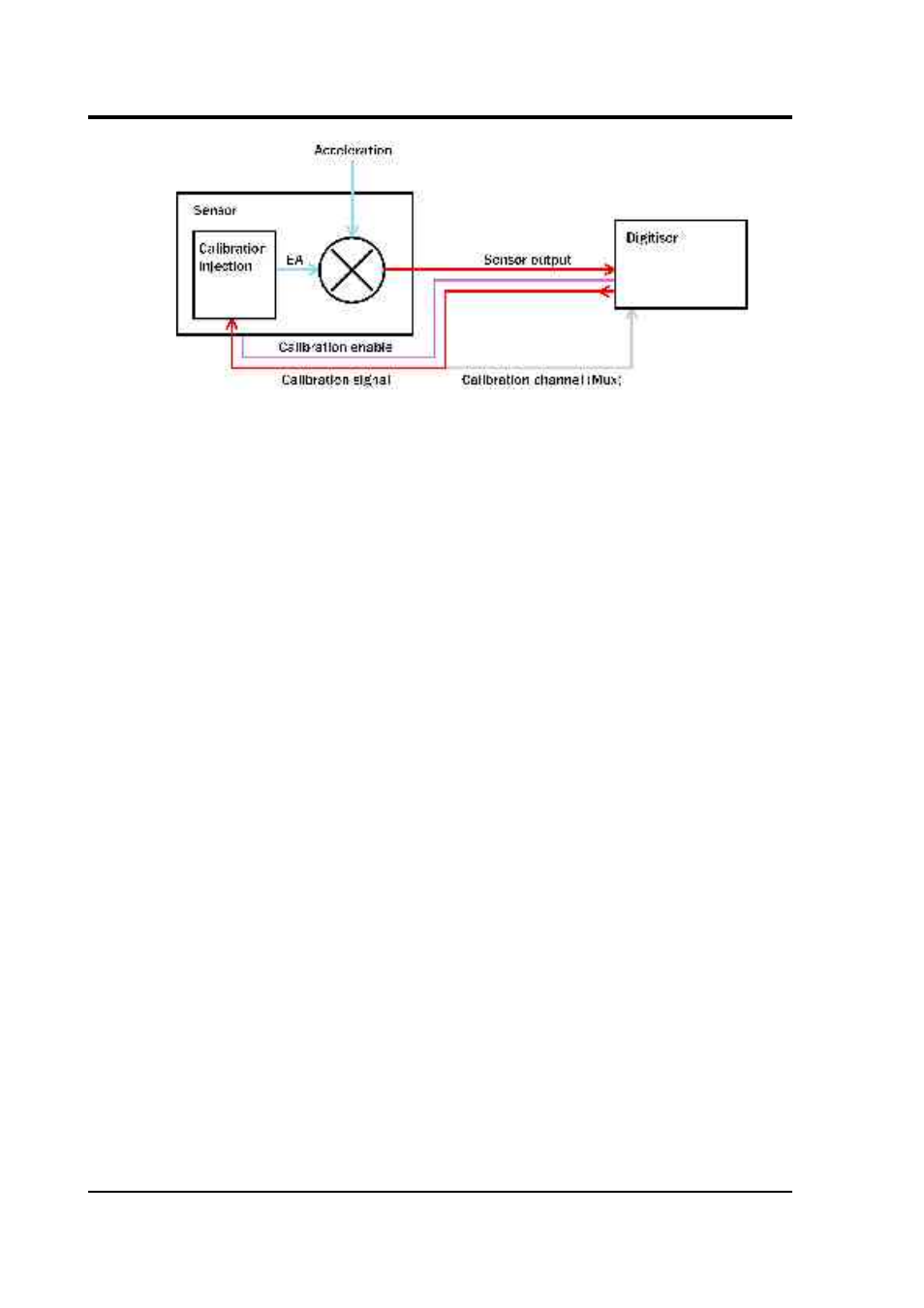Guralp Systems CMG-DM24S12AMS User Manual
Page 66

CMG-DM24S12AMS Operator's guide
In the diagram above, a Güralp digitiser is being used to inject a
calibration signal into the sensor. This can be either a sine wave or step
function, depending on your requirements. As well as going into the
sensor, the calibration signal is returned to the digitiser on one of the 4
Hz auxiliary (Mux) channels. The calibration signals and sensor output
all travel down the same cable from the sensor to an analogue input port
on the digitiser.
The signal injected into the sensor gives rise to an equivalent acceleration
(EA on the above diagram) which is added to the measured acceleration
to provide the sensor output. Because the injection circuitry can be a
source of noise, a Calibration enable line from the digitiser is provided
which can disconnect the calibration circuit when it is not required.
Depending on the factory settings, the Calibration enable line must be
held either high (+5 to +10 V) or low during calibration: this is given on
the sensor's calibration sheet.
The equivalent acceleration corresponding to 1 V of signal at the
calibration input is measured at the factory, and can be found on the 5U
calibration sheet. The calibration sheet for the digitiser documents the
number of counts corresponding to 1 V of signal at each input port. The
sensor transmits the signal differentially, over two separate lines, and
the digitiser subtracts one from the other to improve the signal-to-noise
ratio by increasing common mode rejection. As a result of this, the
sensor output should be halved to give the true acceleration.
66
Issue B
